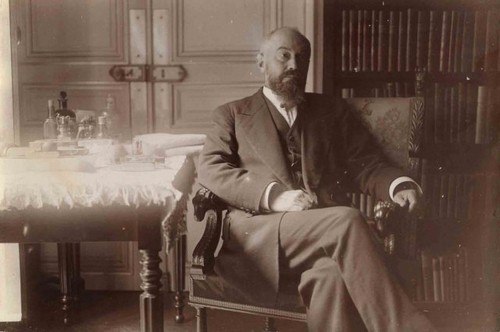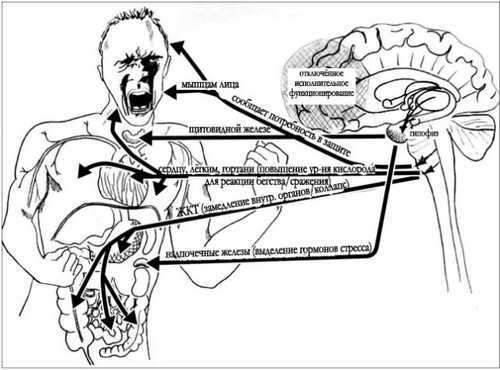However, it is actually possible to travel back along the river-time for more than a century and refer to the activities of Charcot and Pierre Janet at the Salpetriere hospital in Paris.
In fact, it was Janet who, in particular, formulated most of the important problems caused by psychological trauma, which now re-opened modern researchers-clinicians – for example, getting stuck in pereprodavali psychological trauma, dissociation (detachment from the experience) and difficulties with the integration of new experiences and the continuation of a full life.
Zhane was mainly used hypnosis when working with hospitalized patients with trauma to allow them at least some time to relax in the calm.Most people believe that the field of treatment of psychological trauma originated around 1980, when the diagnosis of post-traumatic stress disorder (PTSD) was first included in the “Diagnostic and statistical manual of mental disorders” (DSM) as a result of activities of social movements, taking care of returning Vietnam veterans.
Full recognition of the catastrophic consequences of psychological trauma, as a rule, is too overwhelming for professionals in the mental health field, and for politicians
However, the work of Sigmund Freud has diverted public attention from the works of Jean – partly for the reason that full recognition of the catastrophic consequences of psychological trauma, as a rule, is too overwhelming for professionals in the mental health field, and for politicians. For example, Freud and his mentor Josef Breuer, wrote a number of excellent articles about the nature of psychological trauma in the 1890s, but later recanted his conclusions, as statement about the occurrence of incest in “respectable Viennese families” belonging to the middle class, created a very strong embarrassment with their colleagues.

Pierre Jean
Since then, the concept of psychological trauma has haunted the history of cyclical fluctuations between periods when I recognized the devastating and long-term role it can play in people’s lives, and a time when the concept of the psychological trauma they had to go underground because of the great resistance to the idea from the society and professionals.
The horrors of the trench fighting of the first world war led to widespread recognition of the reality of symptoms of mental shock resulting from concussion, but in 1917 the British General staff gave strict orders prohibiting the use of the term “shock the body” (shellshock) to describe the state of the psychological trauma, because the British military leadership believed that the dissemination of information about this phenomenon demoralizes the soldiers.
The same thing happened after the second world war, when the world quickly forgot about the price that we all pay for what we send young men (and now women) in terms of military action. And yet all of the symptoms that we read about in the Newspapers – suicide, addiction, domestic violence, homelessness and chronic unemployment – was very well documented after each of the wars that occurred in the modern era since the civil war.

However, in the 1980s as a result of the labor of many people, such as Charles Figley, a veteran marine who served during the Vietnam war, wrote a book “Trauma and its consequences” (Trauma and Its Wake) and founded the International society for traumatic stress studies – trauma began to attract more attention from the mainstream psychiatry and psychology. Around this period, Judith Herman and I began a study on the relationship of borderline personality disorder and campbridge behavior rannametsa trauma and neglect on the part of parents or guardians. However, in the early 1990s, just as had happened in 1902, 1917 and 1947, at a time when the movement for the study of psychological trauma has begun to yield serious results, occurred contractia.
In this particular case this was due to social movements that promote the idea of so-called false memories. It tried to prove that the stories about violence that are told to us by our customers, are groundless, as they were the result of a systematic indoctrination of false memories on the part of psychotherapists. A significant part of this movement was maintained by the Roman Catholic Church, faced with a huge number of lawsuits involving allegations of priests sexually abusing children, as well as psychologists who made a good living in the context of judicial-psychological examination, engaged in the refutation of statements made by victims of sexual violence. After a string of lawsuits against the Church was somehow closed, and with it disappeared and the whole “industry” of false memories.
One result of the scandal around contractee, relying on the concept of false memories is that field of study psychological trauma is divided into two parallel developing areas of activity, and almost all research grants were aimed at veterans and military sphere. Another area of research is the neglect and abuse of children and violence against women – have been underfunded, and as a result, scientists and clinicians have not received the opportunity to conduct a sufficient number of high quality studies to scientifically determine the best methods for healing this category of people. As a result, our field of study psychological trauma is turned into a space of passionate appeals, backed by only a small number of reliable scientific evidence.
However, some of the key discoveries (or rather, in most cases the “rediscovery”) has helped to improve the treatment of psychological trauma. One of these discoveries was the recognition of the large role played by dissociation from the point of view of the effects of psychological trauma, and that therapy must address the diverse work of personal agencies that may conflict with each other or between which the actor may fail when it is experiencing the consequences of psychological trauma. Another significant breakthrough was the emergence of the techniques desensitization and reprocessing eye movement (EMDR) in the 1990s.
She became the first approach, showing that we don’t need to rely on medication or traditional methods of “talking cure” to help injured people let go of their traumatic memories. Similarly, body oriented psychotherapists have recognized the importance of the fact that “the body remembers“, if we are talking about psychological trauma; it breathed new life into approaches that work “bottom-up” (that is appropriate to the problem through the body and through it influence on the psyche and functioning of the Central nervous system – approx. building), such as somatic experiencing (somatic experiencing), and sensomotory Hakomi method of psychotherapy, which helps people who are stuck in a traumatic experience to escape from the obsessive reaction of fight – flight – freeze.

Illustration from the book by Bessel van der Kolka “The Body Keeps the Score”
Using neurobiological feedback (neurofeedback) we are exploring our options for “flashing” of the brain, stuck in reactions fading or horror, and the first of our published scientific studies of this process show how traumatized children and adults can learn to make changes in how it regulates their brain. The practice of attentive awareness (mindfulness) allows people to be attentive to your body and opens the door to feeling safe. In fact, our study, which was funded by a grant from the National Institute of mental health, shows that, apparently, yoga therapy is more effective than any drug therapy in the treatment of PTSD.
The study showed that, apparently, yoga therapy is more effective than any drug therapy in the treatment of PTSD
The ability of conscious attentiveness is a necessary condition in order that it may be a positive change. The hypnotherapists has long been known that the introduction of the man in the trance state can facilitate the integration of traumatic experience into his total consciousness. More recently, methods of internal family systems (internal family systems), and provided psychotropic approaches using a substance-“empathogen”, showed the possibility of introducing people into an altered state of consciousness from which they actually can better observe themselves and to develop compassion towards themselves. This allows them to integrate their dissociated in the past “I”-part with a condition of tranquil mind, focused on the experience of the present.
Regardless of the results of all these studies, the largest funding received cognitive-behavioral therapy (CBT) – even despite the fact that we know that in the case of psychological trauma disables all cognitive area of the brain and activated a primitive part of the brain responsible for survival. So the use of CBT in relation to psychological trauma similar to offer a Jogging man with an amputated leg. CBT really allows people to develop greater awareness in relation to their existing coping strategies, if they are in a suitable and proper frame of mind, but its effectiveness is very limited in application to severe psychological trauma.
The most common CBT approach to working with trauma is exposure therapy, where the main assumption is the assumption that desensitization of a person in relation to the fact that previously served as a trigger for a negative state, is the best way to help him less exposed to the impact of their traumatic memories. The problem of this technique is that desensitization leads to a global lack of feelings and involvement, so when you desensitizing to his psychological trauma, along with this desensitizing and to joy, pleasure, engagement, and everything else. Desensitization should not be a goal of treatment. On the contrary, we must help injured clients that they came to the realization: “Yes, it happened to me many years ago, but not today; today is the perfect time, and I am no longer the kind of person were/was then.” This integration connects different neural network than a neural network of desensitization.
I hope that research of the therapy of psychological trauma, we’ll come to that learn how to help clients use their imagination more fully, to behold their existing potential. For example, I participate in several drama club for children who are “at risk”; the aim of these clubs is to help children to experience what it’s like to be someone else, to assume a different identity than the one to which they are accustomed. Then they get the opportunity to exclaim: “Oh, so that’s what it means to be a mighty General,” which contrasts with the very familiar: “nobody likes me; everybody hates me; I will definitely hurt.”
I believe that dramatherapy and new techniques, such neurobiological feedback can play an important role in calming the brain and helping him with that, so he came in as a more integrated, more United with the body. In our culture we too often rely on alcohol or drugs in an attempt to feel better. Probably the most important contribution that the world of psychotherapy (including therapy, psychological trauma) can do in the wider layers of culture, is giving people opportunities for greater access to their innate system of self-regulation – how they move, breathe, sing, interact with each other. It’s important for people to be able to access their own natural resources to regulate itself in a different, more positive way, especially during periods of difficult life challenges.



